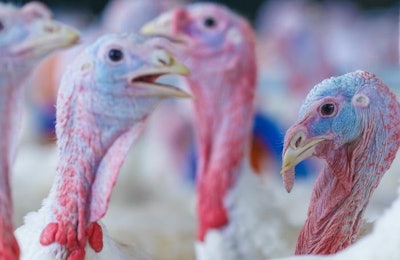
While reducing antibiotic use on is often perceived as a key component of antibiotic stewardship, Dr. Randall Singer, professor with the University of Minnesota Department of Veterinary and Biomedical Sciences, cautions veterinarians and poultry producers to not make it their primary goal.
“Reduction is a part of stewardship, but remember that there are going to be years when disease incidence could go up. If disease incidence goes up, your use of an antimicrobial will likely also go up. That doesn’t necessarily mean you’re doing a bad job on stewardship. It means you are perhaps doing a responsible job as a veterinarian managing the disease and the health of your flocks,” Singer said during the National Institute for Animal Agriculture (NIAA) Antibiotics Council Meeting on March 18.
A more appropriate goal would be reducing the need for antimicrobials, but that can also be tricky, he added, because there are cases where there are imperfect interventions for diseases that affect both broilers and turkeys.
One example Singer gave was for clostridial diseases in turkeys, such as gangrenous dermatitis. Applying penicillin remains perhaps the most effective way to prevent and control it.
“This is not a disease for which you could easily control,” said Singer. “There are many factors that predispose a flock to it. We don’t have great efficacious interventions, other than the antimicrobial treatments for the sick flocks, so penicillin remains a really important antimicrobial for treating disease.”
But if your goal is reduction of antimicrobials on a milligram per kilogram liveweight basis, drugs such a penicillin have a very high molecular weight, so in order to get the desired effect in disease control or prevention, “you are going to use a lot of drug in milligrams.”
“If you are playing a game of ‘I need to reduce my use based on total milligrams,’ it will be hard to do in turkey because of the amount of penicillin that is used,” he said.
But with a lack of highly efficacious interventions available for gangrenous dermatitis, and the fact that it is unethical to forgo therapy for flocks that are experiencing illness, that may leave switching to another drug as the only other option, and Singer says that might not be the best option.
Turkey flocks with clostridial diseases could also be treated with a more potent antimicrobial such as lincomycin, which could reduce total grams of drug use more than 14-fold due to its molecular weight and potency, but Singer expressed skepticism whether that would be the best decision.
“That, to me, is not necessarily good stewardship,” he said. “We shouldn’t be picking the drug with the sole goal of reducing our milligrams of drug use. We should be picking the drug based on what’s going to be most efficacious for that flock’s disease issue.”

















